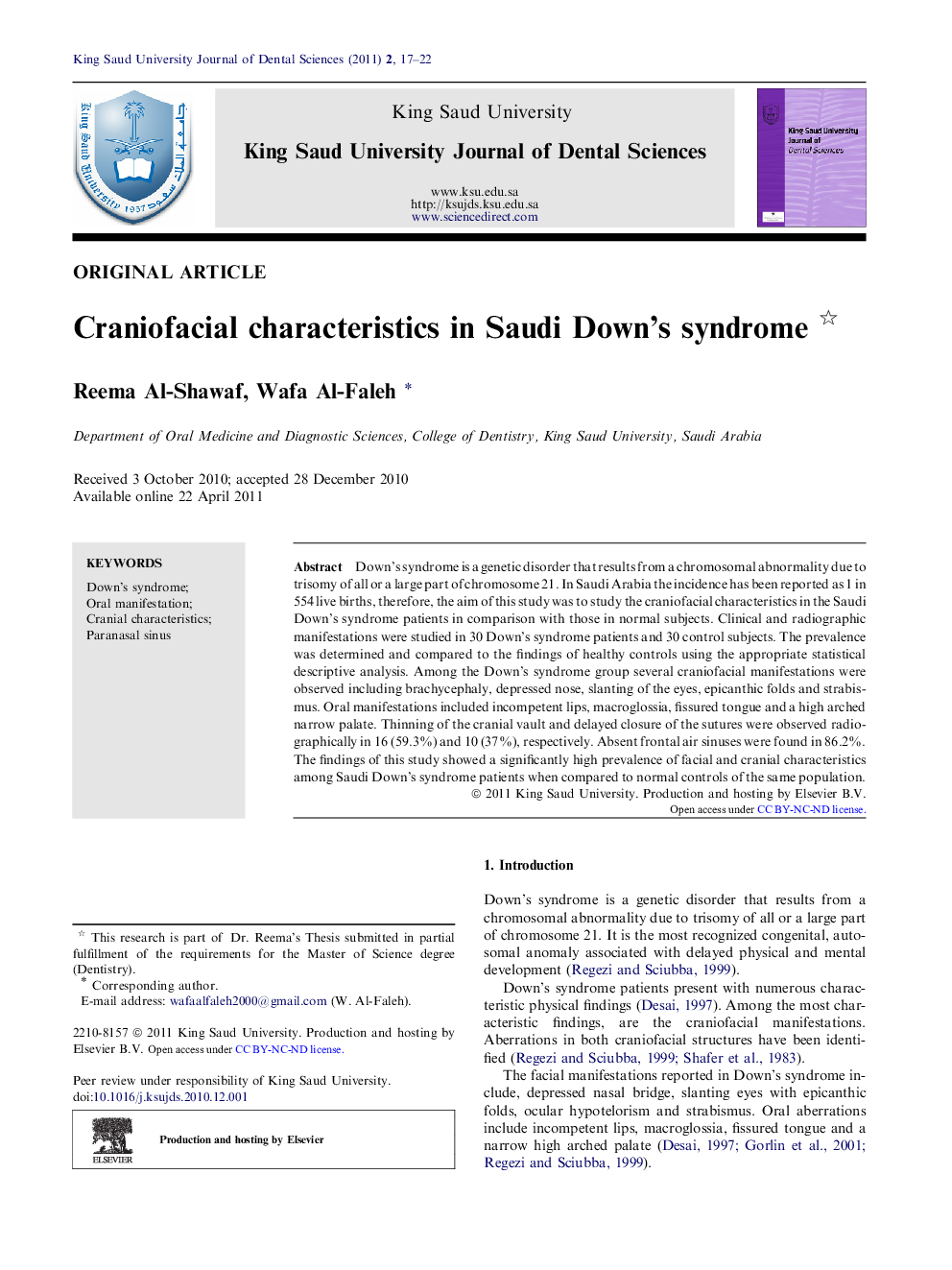| Article ID | Journal | Published Year | Pages | File Type |
|---|---|---|---|---|
| 3160838 | King Saud University Journal of Dental Sciences | 2011 | 6 Pages |
Down’s syndrome is a genetic disorder that results from a chromosomal abnormality due to trisomy of all or a large part of chromosome 21. In Saudi Arabia the incidence has been reported as 1 in 554 live births, therefore, the aim of this study was to study the craniofacial characteristics in the Saudi Down’s syndrome patients in comparison with those in normal subjects. Clinical and radiographic manifestations were studied in 30 Down’s syndrome patients and 30 control subjects. The prevalence was determined and compared to the findings of healthy controls using the appropriate statistical descriptive analysis. Among the Down’s syndrome group several craniofacial manifestations were observed including brachycephaly, depressed nose, slanting of the eyes, epicanthic folds and strabismus. Oral manifestations included incompetent lips, macroglossia, fissured tongue and a high arched narrow palate. Thinning of the cranial vault and delayed closure of the sutures were observed radiographically in 16 (59.3%) and 10 (37%), respectively. Absent frontal air sinuses were found in 86.2%. The findings of this study showed a significantly high prevalence of facial and cranial characteristics among Saudi Down’s syndrome patients when compared to normal controls of the same population.
